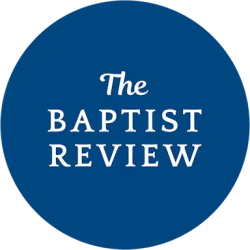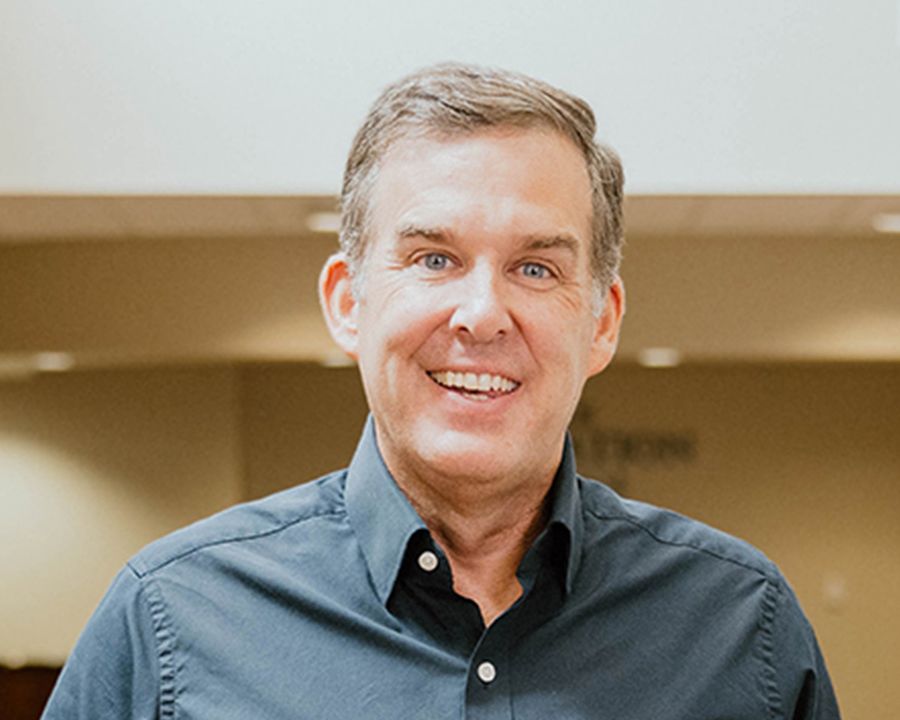"I take my text and make a beeline for the cross." This quote has often been attributed to the great English Baptist preacher Charles Haddon Spurgeon. Whether or not he said this is debatable, but there was another Baptist preacher who certainly made this his practice. That preacher was Adrian Rogers.
Adrian Rogers was born to Arden and Rose Rogers on September 12, 1931, at the Good Samaritan Hospital in West Palm Beach, Florida. He came to Christ as a fourteen-year-old boy at Northwood Baptist Church during a revival led by evangelist Fred Brown. Rogers struggled with assurance for a couple of years after that until one summer night, at the corner of Calvin and 39th Street in West Palm Beach, he asked God to give him the assurance of his salvation. He didn't ask for a sign or a feeling but was willing to take God at His Word. He declared that if he were not already saved, he wanted to be saved, and if he was truly saved, this would not take it away. Under the light on that street corner, a teenage Adrian Rogers drove a stake in the ground and enjoyed the assurance of his salvation from that time forward.
Rogers surrendered to God's call to preach under the ministry of his pastor, Guy Marlowe. Marlowe taught the young people of his church that God had a will for every person's life and that they should discover what that plan was and get in on it. As a result, Rogers began to pray about God's plan for his life. That plan became abundantly evident to him one night on his football practice field. He laid face down on the grass in the middle of the field, dug a little hole for his nose to get as low as he could, and said, "Lord, I'm as low as I know to get; I want you to use me." He later said, "I didn't speak in strange languages or feel any electric thrills or anything, but I really believe God anointed my life to preach." I believe that Rogers's personal experience and spiritual convictions led him to become the effective and consistent evangelistic preacher he became.
The Lord blessed me to watch Adrian Rogers's ministry from a distance as a boy and young man and more up close as a young pastor. I grew up in a house where Adrian Rogers was a name that was often heard, and his sermons even more so. I was later blessed to serve at Bellevue Baptist Church during my seminary days at Mid-America Baptist Theological Seminary before being sent out by Dr. Rogers and Bellevue to start a church in Columbus, Ohio. I went on to write my Ph.D. dissertation at Southwestern Baptist Theological Seminary on the public invitation in the preaching of Adrian Rogers.
During those years of listening to sermons, watching interactions, and studying his invitations, I observed several things about his evangelistic emphasis and public invitations that I want to share as an encouragement and example for preachers today.
First, Adrian Rogers always preached Jesus. That was the passion and purpose of his ministry. I heard him say more than once when someone would ask him why he lived and preached the way he did, "I guess it's because I've never gotten over getting saved." This focus on Jesus and what He'd done in Rogers's life was evident in his preaching. When you listen to sermons by Adrian Rogers, you will notice a recurring theme—it's all about Jesus. He claimed the promise of John 12:32 that when Jesus is lifted up, He will draw all men to Himself.
Second, since Jesus was the focus of His preaching, inviting people to respond in faith by surrendering their lives to Him was the natural goal of His sermons. The entire sermon invited men and women to respond to Christ. In His sermons, he would share, illustrate, and enunciate the gospel of Jesus; thus, the invitation to "come to Jesus" would be the expected way for Him to conclude his sermon.
Rogers developed a ten-point guide to help pastors give public invitations more consistently and effectively. He taught that preaches should give public invitations:
Courageously
Rogers believed that preachers should be courageous in giving an invitation even when they do not know whether people will respond. Preachers may demonstrate courage by giving an invitation even though others may disagree, become angry, and criticize the preacher for extending an invitation. The preacher is courageous, according to Rogers, when he gives the invitation even though he knows it will cost him, it will hurt him— "You get up and die a little every time you give an invitation." Rogers taught that the preacher should be unapologetic in extending a call for people to respond personally, publicly, and immediately.
Clearly
Rogers said, "Tell them exactly what you want [them] to do. Beware of cliches like, 'Are you willing to make a profession of faith?'. . . Just make sure also when you give the invitation, give it clearly. You know, there are a lot of preachers who think they have preached the gospel, and they haven't preached the gospel. They may preach a Bible message. It may be pertinent. It may be applicable and all that, but it's not a gospel message. . . . Get the gospel into whatever you're doing. It's so very important that you are very clear."
Concisely
Rogers emphasized leaving enough time at the end of the sermon so as to avoid rushing the invitation or introducing anything new or confusing during the call for response. He said, "Save enough time for the invitation. Don't go on and on in the invitation." Rogers estimated it took about five minutes to explain how to be saved and how to respond. He also cautioned that the invitation should not be the time to introduce new factors. As Rogers said, "Don't chase rabbits."
Convincingly
Rogers taught that the invitation should be given with a sense of urgency, seeking to persuade hearers to respond to the gospel, with the expectation that they would respond personally, publicly, and immediately. He shared, "Remember what Peter did on the day of Pentecost? 'And with many other words, he did testify and exhort saying, 'Save yourself from this untoward generation.' Can't you see Peter with the tears streaming down his cheeks? Can't you see him with his arms stretched out? He doesn't have a take-it-or-leave-it attitude. I mean, he wants to convince them that they need to be saved. The Bible says, 'Go out the highways and the hedges, and compel them to come in.' The Apostle Paul said, 'Knowing the terror of the Lord, we persuade men."
Cooperatively
Rogers believed it was important for the church to work and pray together to see people respond to the invitation. He counseled, "Let the entire church participate in the invitation. In a big auditorium, it's better to stand at the front and let the church members work together. Teach your members how to pray during the invitation. . . And commend your congregation after the invitation. Thank them. Many times, I'll say, 'Oh people, let me thank you for your faithfulness and your prayerfulness during this invitation time. I love you so much."
Consistently
A mark of Rogers's ministry was consistently using the public invitation. Bob Sorrell, Rogers's longtime Associate Pastor, observed how "virtually every sermon ended with a gospel invitation." Rogers taught preachers to "somehow, someway, be consistent. Give an invitation." Putting it in the context of the planning and calendaring of the local church, Rogers advised, "Give the invitation consistently. Don't wait till the revival meeting in July and August to invite people to Christ. Do it week by week by week and daily if you can, so the Lord is adding to the church daily such as should be saved."
Creatively
Rogers believed the preacher should seek to be creative in giving the invitation. Sorrell noted that Rogers "varied [the public invitation] depending on the circumstance." Thus, a hallmark of Rogers's invitations was creativity. While he often followed a similar flow of addressing Christians first, then those who were either lost or unsure of their salvation second, giving detailed instructions for how to respond, and finally addressing those who were watching via television, Rogers employed a great deal of creativity in his approach to the invitation.
Compassionately
Rogers thought that the pastor should be compassionate while giving the invitation. He counseled preachers, "Don't be afraid of tears." Rogers believed that emotion on the part of the preacher was a good thing and that he should consider the emotions and feelings of the people he was addressing during the invitation. This was not to be done to shirk his responsibility to confront sin or call for a response, but rather to be more "biblical and fruitful" when inviting people to respond at the end of the sermon.
Convictionally
Rogers believed and taught that the preacher should rely on the power of the Holy Spirit in his preaching and the conviction of the Holy Spirit in the lives of those he was calling to respond. Rogers did not view extending the invitation as a way to get decisions but rather as a way to help people make a decision in response to the conviction of the Holy Spirit.
Celebratorily
Rogers emphasized that the pastor and church should celebrate those who come during the invitation. He said, "After I give an invitation and people come, I say to the congregation, 'Let's rejoice with those who've come this morning. Praise the Lord, amen,' and people begin to rejoice and sometimes even shout. The happiest time in our church ought to be when newborn babies are coming into the family of God." Rogers recalled, "I had a doctor come to me, a medical doctor. He lived about twenty miles away. He said, 'Are you going to be preaching Sunday?' I said, 'Yes.' He said, 'I'm going to be bringing a patient. The patient needs to be saved.' He said, 'I want to bring my patient.' I said, 'Well, wonderful, doctor. I'm so glad.' But I said, 'Why don't you bring your patient to your own church?' He said, 'They don't care about souls over there.’"
Third, preaching Jesus and inviting people to respond personally, publicly, and immediately permeated the entire ministry of Bellevue Baptist Church. Rogers believed that the pastor's emphasis becomes the church's emphasis. I saw this firsthand while serving in the ministries and sitting in the pews under Adrian Rogers's preaching. The old saying goes, "Evangelism is as much caught as it is taught," and Rogers's evangelistic passion and practice of inviting people to "come to Jesus" impacted my life and ministry, as well as the lives and ministries of countless preachers and pastors.
In his first sermon as Pastor of Bellevue Baptist Church, Adrian Rogers said, "There are those who can preach the gospel better than I can, but nobody can preach a better gospel than I can because there's only one gospel, and that's the gospel of the Lord, Jesus Christ." That is an apt summation of the evangelistic emphasis and public invitation in Adrian Rogers's preaching ministry.
Editor's Note: As a part of its commitment to fostering conversation within the Southern Baptist Convention, the Baptist Review may publish editorials that espouse viewpoints that are not necessarily shared by the TBR team or other contributors. We welcome submissions for responses and rebuttals to any editorials as we seek to host meaningful conversations about the present and future of our convention.

Join the Baptist Review for our Presidential Forum in Indianapolis on Monday, June 10 at 9pm. Registration is required for attendance.


